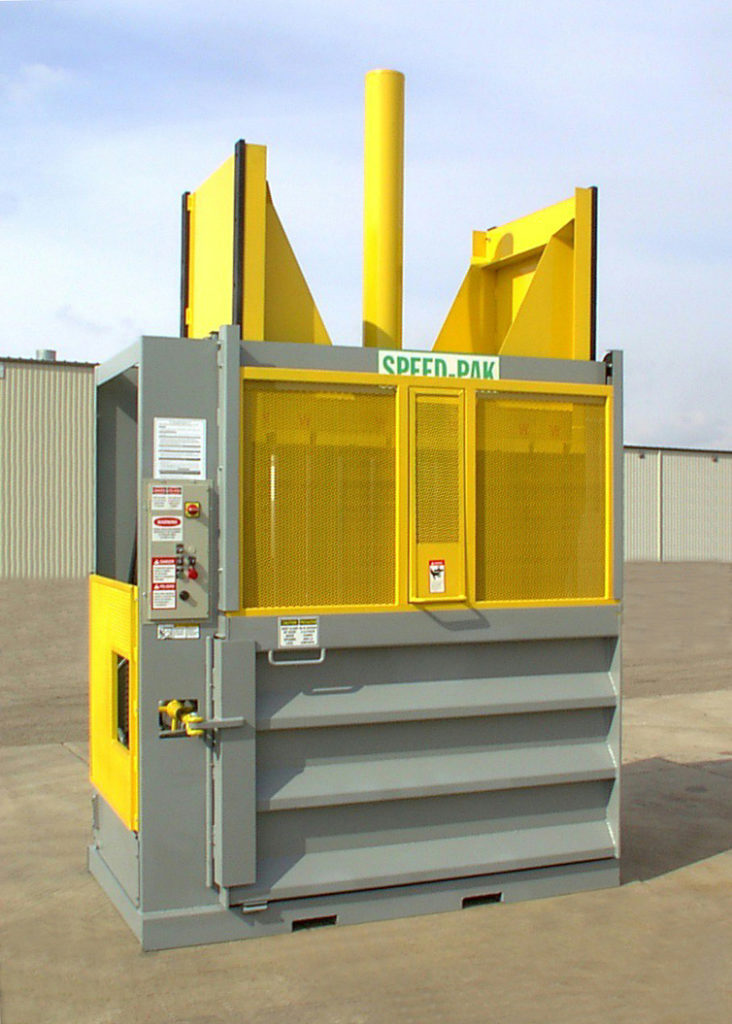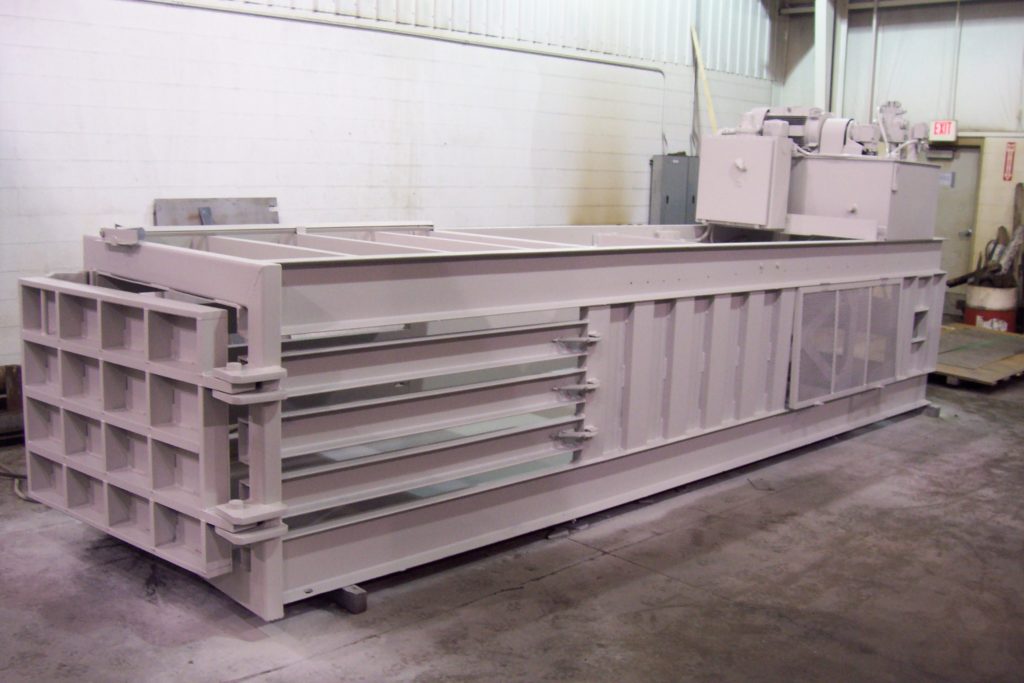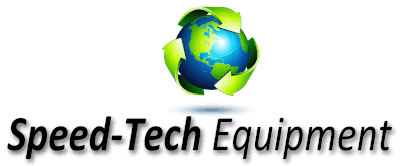Types of Balers: Vertical & Horizontal Balers
There are two types of balers out there. Depending on your business’s recycled material, one of them might be a better choice over the other. Balers are necessary for a recycling program. They help pack large amounts of recyclable material into compact and smaller shapes, allowing easier storage and shipment. In addition to this, they give companies another source of income. They are grouped into two categories: vertical balers (aka downstroke balers) and horizontal balers. Now, do you use a vertical or horizontal baler for your application? Let’s go over it!
Vertical Balers
Vertical balers are those that compress materials with a vertical, downward force and pressure. They are smaller than horizontal balers. Materials that are recyclable, like corrugated cardboard, plastics, and foam, are inserted into the baler. Once the chamber is full at a specified level, the ram or arm of the baler moves downward, crushing the waste. The machine bundles and ejects the crushed waste after they have been compacted. Vertical balers can process most of the same materials processed by horizontal balers

Advantages of Vertical Balers
- Vertical balers tend to be cheaper than horizontal balers. They are usually one fifth or sometimes one tenth the price of horizontal balers. The reason for this is because they are smaller.
- Vertical balers can handle a variety of recyclables, while horizontal balers can only handle a few specified materials. Some examples of waste vertical balers range from office paper to non-ferrous metals. You can purchase a specialized vertical baler, which can process things like aluminum to beverage containers.
- Vertical balers take up less space than horizontal balers. They can be used where horizontal balers would be impractical.
Disadvantages of Vertical Balers
- Smaller models of vertical balers may not produce bales that are “mill standard”. This makes it hard to sell to buyers.
- Even though vertical balers are smaller than horizontal, they are taller, and can be hard to find a place for them.
- Vertical balers may not work for recyclables that have less elasticity when baled, like office paper or newspaper.
Horizontal Balers
Horizontal balers process waste by having it thrown into a hopper on top of the machine. This hopper is connected to a conveyor system. When the hopper is full, a ram or arm compresses the material with horizontal force until the bale is made. The bale is then tied off with wires and ejected from the machine.

Advantages of Horizontal Balers
- Horizontal Balers can handle large amounts of recycling each day. The bales they produce then are larger and more consistent in dense and weight.
- Horizontal Balers can process a wide variety of recyclable materials. From aluminum to office paper, they can do it all.
- Horizontal Balers can be used at your convenience. You have options for in-ground or above-ground conveyor belts, shredders, and air systems. A machine like this provides help to the consumer and requires less manpower to operate.
Disadvantages of Vertical Balers
- Horizontal balers take up much more floor space. Some go up to 40 feet in length.
- Horizontal balers are much more expensive than vertical balers, not including the conveyance, air, or shredding systems. Adding these accessories can increase the price even more
Types of Balers Conclusion
Given these two types of balers, how do you decide what baler you should buy? There are many variables that you must consider, but the main ones are as follows:
- How many bales are produced a day?
- How much money are you able to spend?
- How much space is available for the baler?
Once you answer these questions, you will have a clear choice of what baler is right for you.

